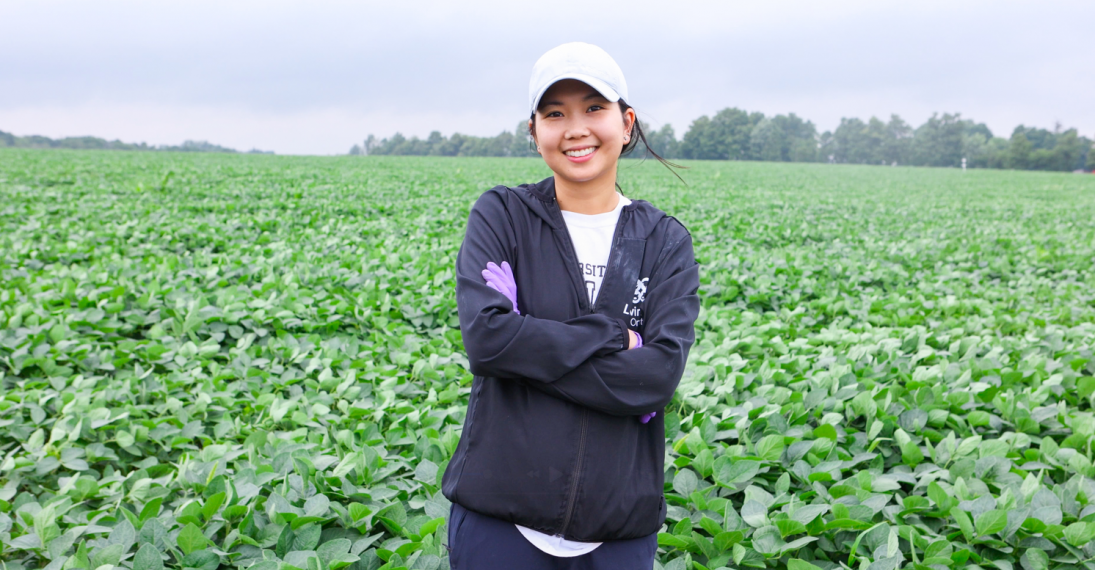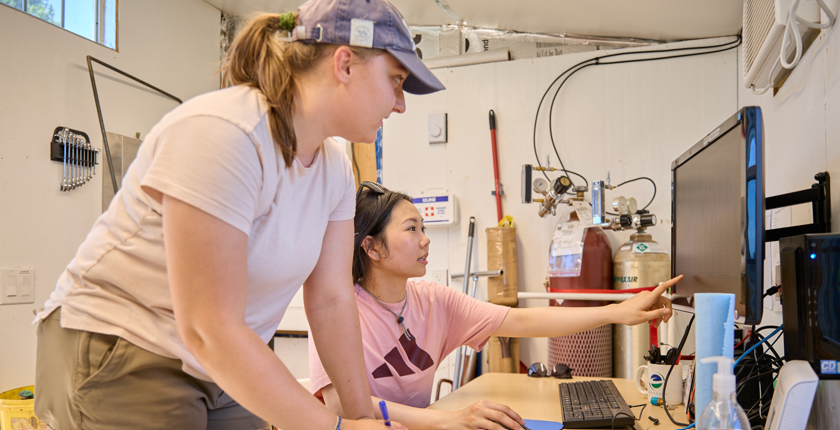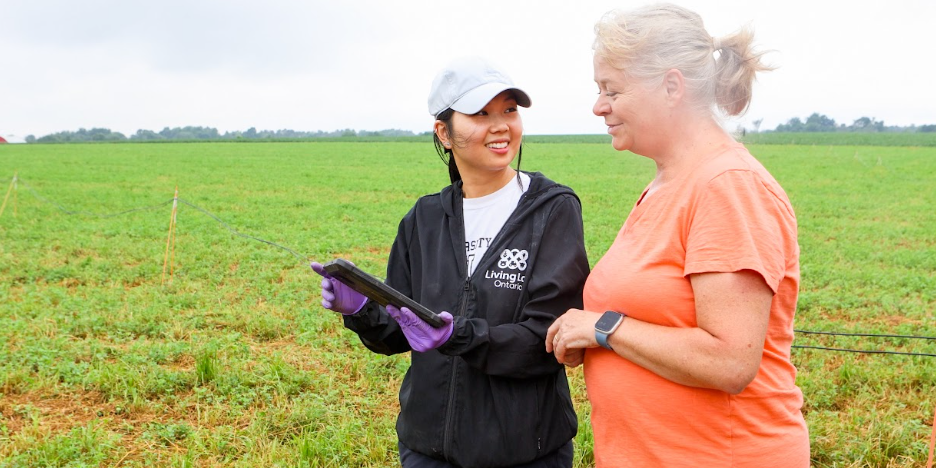Making the Invisible Visible: PhD Candidate Chi Vi Helps Farmers Reduce Emissions Through On-Farm Research

A healthy agricultural sector starts with a healthy planet. As a PhD candidate in the OAC’s Environmental Sciences program with a collaborative specialization in International Development Studies, Chi Vi is helping farmers build more sustainable practices from the ground up by measuring and reducing greenhouse gas emissions directly on their farms.
Co-Developing Sustainable Solutions with Farmers
Working under the supervision of Dr. Claudia Wagner-Riddle, Chi’s research takes place on a Living Lab Ontario project that aims to co-develop beneficial management practices in collaboration with producers, researchers, and other stakeholders. At the Living Lab farm in Fergus, Chi is leading an emissions monitoring trial using micrometeorological methods to capture carbon dioxide and nitrous oxide emissions in real time.
“Our goal is to support farmers with data and strategies that reduce emissions without disrupting production,” says Chi. “We want to make the invisible visible—helping producers better understand emissions, what causes them, and how they can be reduced through practical, real-world solutions.”
Chi’s approach is rooted in collaboration. Her project uses a bottom-up approach that actively involves farmers in the research process, rather than treating them as passive recipients of scientific findings. By working directly on farms and building relationships with producers, she’s helping close the gap between academic research and practical application.

Improving Sustainable Agriculture Across the Globe
“My PhD journey goes beyond the lab or reading papers,” she says. “It’s about working in real-world settings, listening to farmers, and developing solutions that work for their operations. That hands-on collaboration is essential for making sustainable agriculture both effective and accessible.”
From Vietnam, Chi completed her Master of Science at Massey University in New Zealand, where she studied the role of mixed pasture systems in reducing nitrous oxide emissions. After returning to Vietnam, she worked on a development project with a Dutch NGO to promote low-carbon rice farming. These experiences deepened her interest in sustainable agriculture and inspired her to pursue further research.
“Through both my studies and work, I realized that sustainable agriculture isn’t just about applying a single practice,” she says. “It’s an interdisciplinary process that includes social, economic, and technological factors. That’s what led me to the University of Guelph. OAC has strong expertise in both environmental and agricultural sciences, and the interdisciplinary approach here aligned perfectly with my goals.”

Now in Canada, Chi is applying that global perspective to local farming systems. Her current research has three main objectives: to generate real-world data on greenhouse gas emissions for national carbon footprint assessments, to improve communication of scientific results to farmers, and to enhance farmer understanding of emissions and the tools available to manage them.
Her work also supports Canada’s 2030 Emissions Reduction Plan, and she sees her role as helping bridge science and society. “Integrating socio-economic perspectives into environmental science is critical,” Chi explains. “It ensures that the solutions we develop are equitable and usable, and that no one is left behind in the transition to a more sustainable food system.”